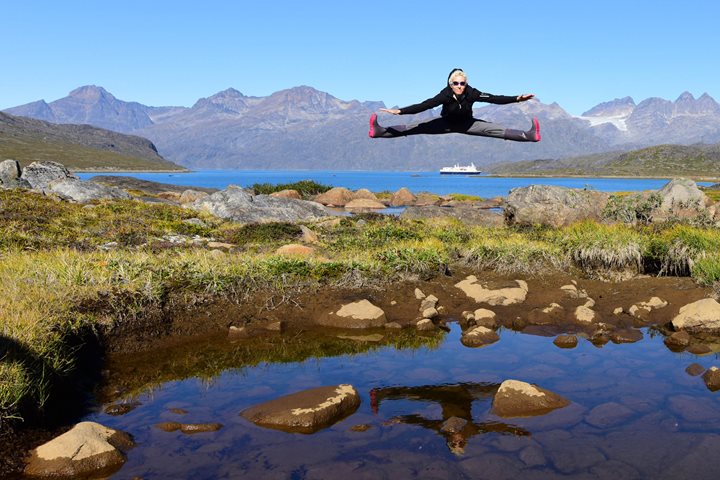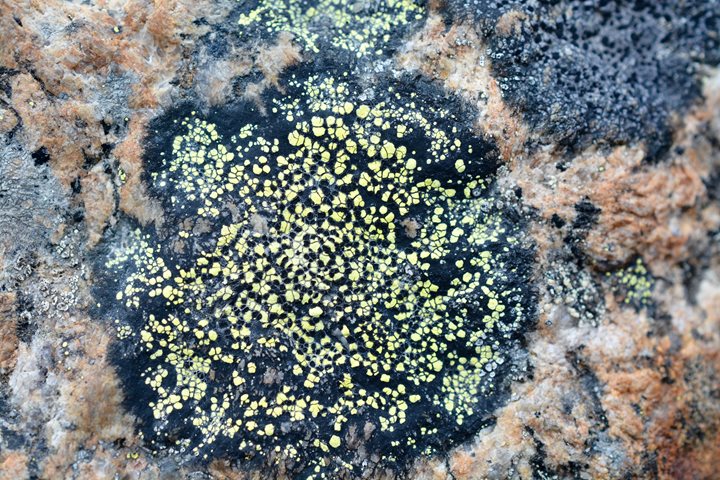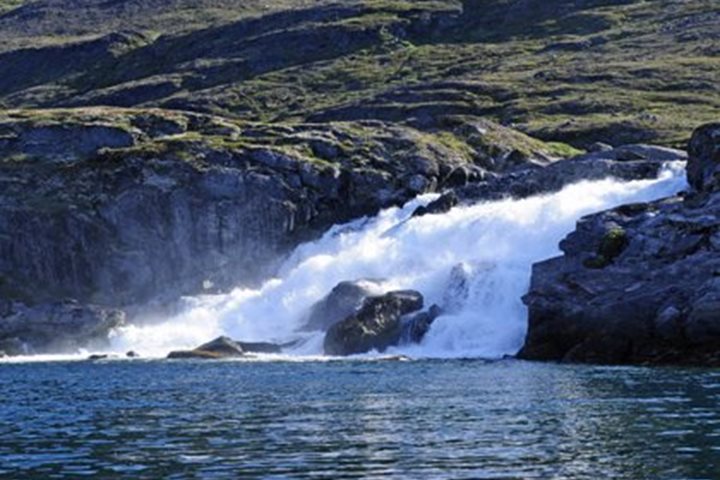Early morning, a hat-shaped fog bank covered the top of the eight-mile-long ridge, Latrabjarg, a bird cliff on the northern coastline of Iceland’s second largest bay, Breidafjordur. The sun peaked through the dark clouds as we slowly cruised slowly along Europe’s largest bird cliffs, nesting home to nearly 40% of the world’s razorbill population. We also got our first glance of Atlantic puffins swimming in the silky smooth water off the bow. Three gannets flew past in perfect flying formation.
Just as breakfast was finished, four killer whales were spotted and we all hastened back up to the bow for some remarkable mammal sightings. They crossed back and forth across the bow of the ship, providing some rare close-up photographic opportunities. Off in the distance we also spotted white-beaked dolphins.
This was the start of our journey from Iceland to Greenland, “Along the Viking Trail,” where we are looking forward to following in the wake of legendary Viking explorers, and learning more about Norse history and Viking sites and settlements.
Just before lunch we had our first presentation in the lounge, an introduction to digital photography by Ralph Lee Hopkins, followed by small technical break-out sessions where we helped guests with their camera settings – a must activity for our photo enthusiasts on board.
Right after lunch we made our first wet landing to one of Iceland’s most picturesque flat islands, appropriately named Flatey, the largest of the “Western Isles” in Breidafjord. A monastery was built here in 1172, becoming the cultural center for Iceland, best known for the Flatey Book Manuscript of the Sagas. During the summer the small island is populated mostly with Icelandic families, who rent the quaint, brightly painted cottages for a week at a time. One of the highlights on the island is the just recently restored church built in 1926, featuring a haunting mural depicting traditional life on the island by a Spanish-Icelandic artist named Baltasar. The vibrant-colored painted houses with metal siding, typical Icelandic architectural style, contrasts neatly with the fresh green fields and grazing sheep.
Today’s visit to the island was a very special one since we were blessed on the path by a beautiful Icelandic fairy clad in a pink silk dress imported all the way from Las Vegas, Nevada. Bryndis Johannesdottir warmly greeted us and told us about herself and family. She, along with three other Icelandic school teachers, come to the island each year to celebrate the long summer days.
Some guests walked out to the end of the island, a great birding spot called Lundaberg, where they saw rafts of puffins in the water, large Eurasian oystercatchers, and eider ducks swimming with their newly-hatched chicks.
Just before heading back to National Geographic Explorer we were treated to a zodiac cruise that took us close to the nearby bird cliffs, treating us to close-up views of kittiwakes, and more puffins in the water.
After the captain’s welcome cocktail party, we set off to cross the Denmark Strait, heading for Eastern Greenland.




.jpg?width=106&height=85&mode=crop&scale=both&quality=50)


